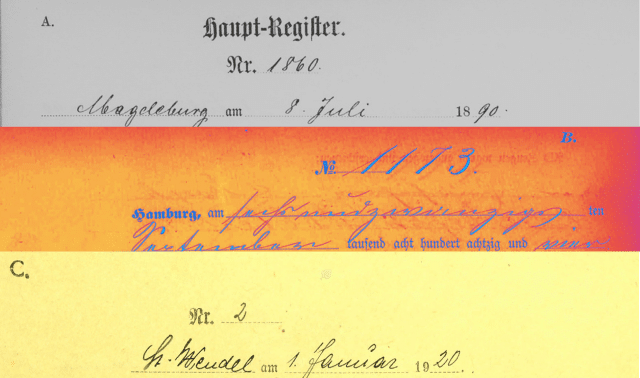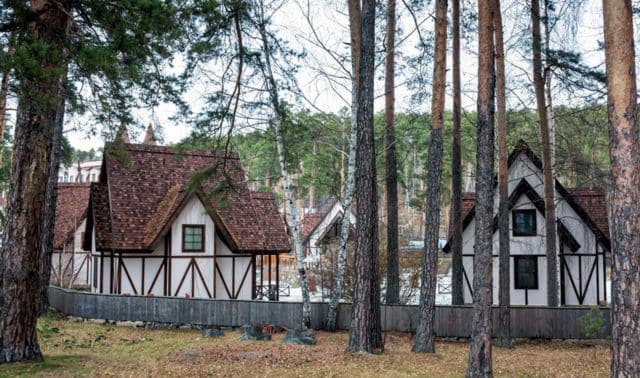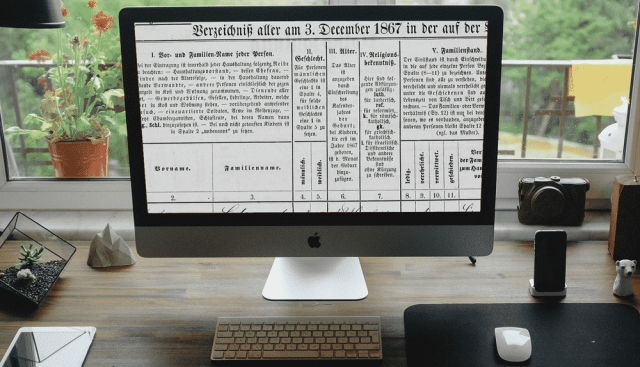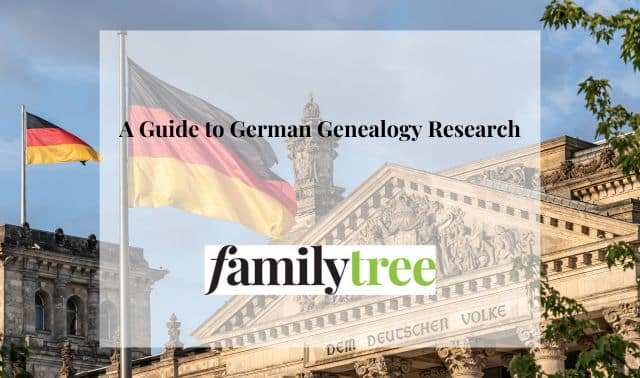German church books are typically the most-informative resource for genealogists looking to find their ancestors in the homeland.
But civil records (officially Standesamtregister, or Standesamt records after the office that created them) are increasingly available online, and are purported to document some 98% of the German public. That makes them critical documents to consult if you’ve either exhausted church records or they’re not accessible for whatever reason.
Here’s what you should know about German civil records: when they were created, what details they included, and how you can find them today.
A History of German Civil Registration
As a general rule, German civil records started in 1876, when the German Empire mandated their creation.
There are a few notable exceptions, however. Provinces that were once part of Prussia had civil registration from 1874. And some western principalities—notably Alsace, Baden, Lorraine, Pfalz, the western Rheinland, and Westphalia—began keeping civil records as early as the 1790s, when they came under French rule. Anhalt (1850) and Hamburg (1811–1815, 1866) also kept civil registers earlier than the wider German Empire.
Details in German Civil Records
Civil records contain genealogically rich information, and have always been kept at the local Standesamt (civil registration office; sometimes abbreviated as StdA). Note that privacy laws restrict access to:
- birth records less than 110 years old
- marriage records less than 80 years old
- death records less than 30 years old
If you’re looking for a record that falls within those time frames, you’ll need to write the appropriate Standesamt. Records available to the public may held by the related archive (Staatsarchiv or Kreisarchiv).
You’ll also find that record availability has been shaped by German history. Many collections were damaged during the World Wars.
German Civil Record Formats
Birth, marriage and death records had standard formats based on event type. The pre-printed registers used the Fraktur typeface, then were filled out by hand using old German script.
An uppercase letter in the top corner of each register indicates what was being recorded: A for births, B for marriages and C for deaths. Also at the top of every civil record is a certificate number, followed by the date and place where the event was recorded.
Marriage records are two pages long, making them more genealogically rich than birth and death records.
See the case study and sample record below for how the records are generally organized. For more, see Ancestry.com’s comprehensive guide to the three types of German civil records.
Words in Civil Records
| German | English |
| evangelisch | Protestant (both Lutheran and Reformed) |
| geboren (geb.) | born |
| Geburten | births |
| Heiraten | marriages |
| katholisch | Catholic |
| Kreis | district |
| männlich | male |
| Nachname | surname |
| Nummer (Nr.) | number |
| Ort | location |
| Register | register |
| Sohn | son |
| Standesamt | civil registration office |
| Sterberegister | register of deaths |
| Suche | search |
| Tochter | daughter |
| Vorname | forename |
| weiblich | female |
| wohnhaft | resident |
Where to Find German Civil Records Online and In-Person
To find civil registers, you’ll need to keep in mind both the ancestral hometown and the Standesamt it was assigned when your ancestors lived there. Also remember that the historical Standesamt may well be different from the modern one, especially since many offices were consolidated or otherwise changed in the 1970s.
1. Search for the Historical Standesamt
Since many civil records aren’t yet online (or are organized online by office), you’ll need the Standesamt name and contact information to search for documents.
Meyers Gazetteer should be your first stop when trying to find a Standesamt. Originally published in print in 1912, this resource has been digitized and catalogs place names as they existed in the Second German Empire (1871–1918). Family Tree has a helpful tutorial for this free website.
Civil registration offices are indicated next to “StdA” in each place’s Entry tab. Only when you have the Standesamt should you turn to sites such as Ancestry.com and FamilySearch, which have digitized many—but not all—surviving civil records.
2. Consider Other Countries
German borders fluctuated somewhat over time, and some areas that were once part of the German Empire are now part of other countries.
If your ancestor lived in areas of Prussia that are now part of Poland, consult Kartenmeister to navigate border and name changes. Type the name of an historical German city in field 1 (or the modern-day Polish city name in field 2) to explore different Standesamt names. Then use the Standesamt name to see what catalog entries are available through the Polish archives.
3. Search Genealogy Websites
With your Standesamt in hand, search site catalogs at Ancestry.com, FamilySearch and more for collections that have records for your ancestor’s Staat.
FamilySearch, in particular, has digitized many German civil records. See the research page for Germany. The page organizes collections by how accessible they are online: Indexed, Image-Only, and “Catalog Material” (which includes other offline materials that FamilySearch holds).
You can drill down to your ancestor’s specific state or town by visiting the Catalog itself. Do a Place search for Germany, [State], [Town]. You’ll see a list of resources organized by type; look for those under Civil Registration.
4. Contact the Present-Day Standesamt
If records your ancestor’s records aren’t yet online or are within privacy restrictions, you’ll need to determine the current Standesamt to request record copies.
One shortcut is searching the Standesamt name in the German-language Wikipedia. The resulting municipality page will typically be the modern equivalent, which you can search here. The site provides contact information (including an email address) for that Standesamt.
FamilySearch provides a helpful guide to writing record-request letters to German organizations.
Case Study: Details in a Marriage Record
Having just one extra record can make all the difference. That was certainly true when I found a marriage record for a client’s great-grandparents, Anton and Augustine Werner.
Previous research had documented the couple and their children using church records in Deutsch Eylau, West Prussia (now in Poland). We knew more about Augustine’s history before the family emigrated to Ohio, but less about Anton. His birthplace—and information on his side of the family going back in time—was still a mystery, and the church marriage record didn’t provide enough details to connect the dots. My client’s brick wall had become my own.
We made great progress by consulting Namensindex, which is dedicated to Standesamt records from East and West Prussia. The site is in German, but we were still able to search by:
- typing Werner in the Nachname (surname) field
- selecting “Heiraten” (marriage) only in the Register box
- entering 1885 twice under Zeitraum (time period, indicating year)
- clicking Starten (start)
Results included what appeared to be a marriage index for Anton, which linked to a scanned copy of the record itself through Polish archives. I’m able to page through the records in the set; Anton’s is the eighth marriage listed.
The sample image below shows the first part of the document. (Page 2, not shown, lists the witnesses to the marriage.)
Sample Record: German Civil Marriage Register
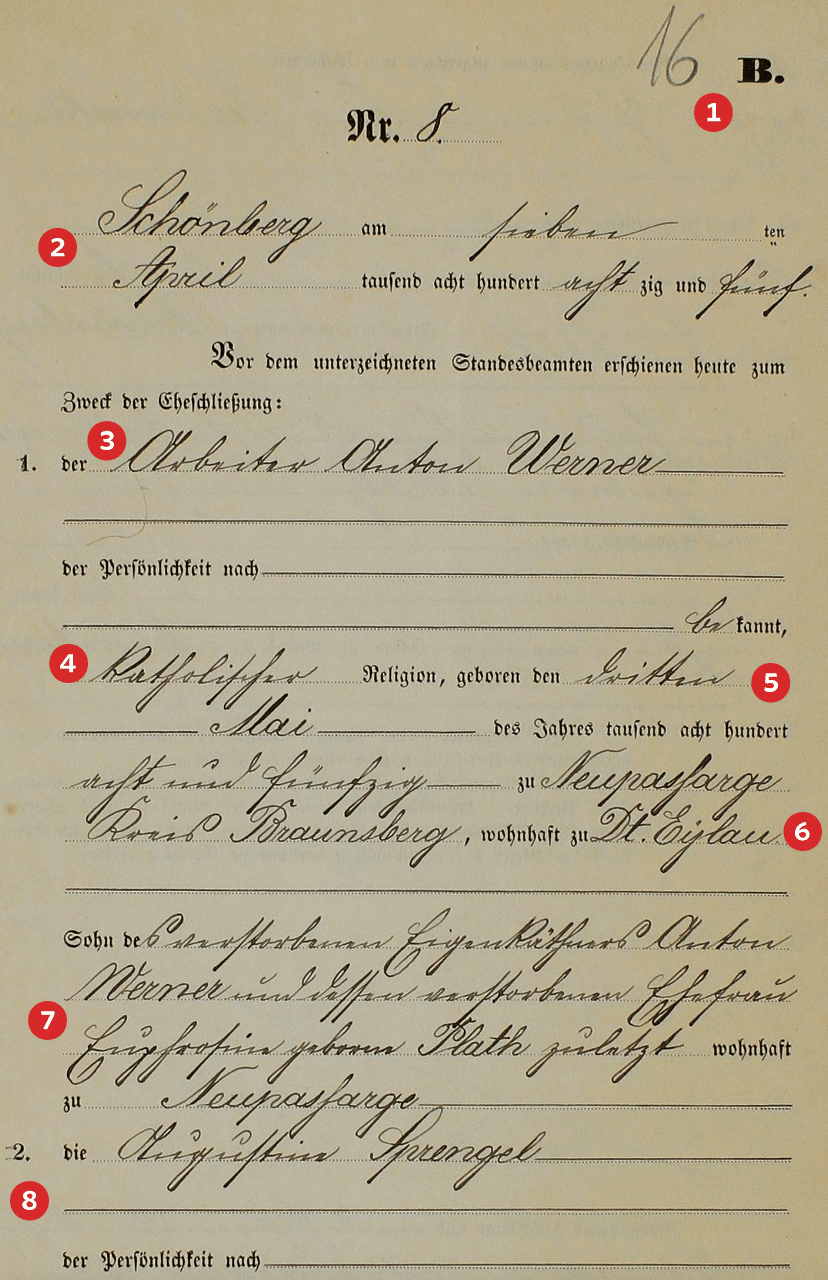
Anton’s information is in section 1. The German can be a bit difficult to decipher. But details (indicated in the callouts) include:
- Event type: Each record has a certificate number, plus a letter indicating the event type (in this case, B for a marriage record).
- Event date and place: Part of the year is typed and part is handwritten: tausend acht hundert [aucht]zig und fünf (Eighteen Eighty-Five, or 1885).
- Name and occupation: The groom (Anton Werner) is listed in section 1. Before his name is his occupation: Arbeiter (worker).
- Religion: Though a civil document, this record indicates Anton was Catholic.
- Birth date and place: Geboren begins information on birth. As with marriage date, the year is written out. His birthplace is Neupassarge, Kreis Braunsberg.
- Current residence: Wohnhaft zu indicates “resident of” Dt. Eylau, an abbreviation for Deutsch Eylau (an historical town now in Poland).
- Parent information: Both parents are named, with birthplaces and current place of residence. It even specifies Anton’s mother’s maiden name (“geboren Plath”).
- Spouse information: Section 2 covers Anton’s bride, Augustine Werner (née Sprengel).
Just that one record seemingly answered questions my client had wondered about for years. Anton was raised Catholic, matching a family narrative that’d been passed down for generations.
More significant was Anton’s birthplace—a town in East Prussia, not West Prussia. That opens new paths of research for church records.
Locating and deciphering German civil records can be challenging. With some practice, though, you may be able to use them to shed light on your German ancestors.
A version of this article appeared in the September/October 2024 issue of Family Tree Magazine.

